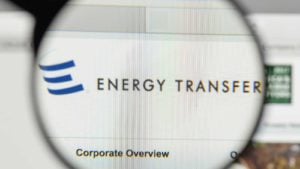
Source: rafapress / Shutterstock.com
Some traders are buying Super Micro Computer (NASDAQ:SMCI) stock because the company sells artificial intelligence enabled servers. They’re looking for the “next” Nvidia (NASDAQ:NVDA). It’s a dangerous quest, though, and this is the worst possible time to invest Super Micro Computer stock.
Truly, this is a recipe for disaster. As we’ll discover, the sentiment and expectations surrounding SMCI are sky high. Chasers get punished eventually, and with Super Micro Computer, I believe the reckoning will be sooner rather than later.
The Dizzying Ascent of SMCI Stock
Why did SMCI stock zoom from $100 to around $1,200 during the past year? And, just as importantly, why is the stock apparently starting to roll over?
The most obvious answer is that, as I alluded to earlier, AI-hardware hype is in full effect and everybody wants the “next” Nvidia stock. That’s not the only contributing factor, though.
Currently, Super Micro Computer is “double-dipping” as it’s a member of both the S&P 500 and the Russell 2000. Thus, when funds and individual investors buy these indexes, they’re indirectly propping up SMCI stock.
One might whether Super Micro Computer can continue to be a member of a large-cap index and a small-cap index for much longer. Investors may also ask if Super Micro Computer’s GAAP trailing 12-month price-to-earnings (P/E) ratio of 73.93x is sustainable.
A Bad Sign for Super Micro Computer
Now, after the wild share-price ascent, Super Micro Computer has to live up to high expectations. For example, JPMorgan analysts set a $1,150 price target on Super Micro Computer stock, while Northland analyst Nehal Chokshi envisions the stock rallying to $1,300.
Moreover, Super Micro Computer lifted its fiscal 2024 revenue guidance from a range of $10 billion to $11 billion, to a range of $14.3 billion to $14.7 billion. That’s a big revenue-guidance hike, and it appears that the market has already priced its lofty expectations into the shares.
Yet, there’s a development that prospective investors can’t afford to ignore. Specifically, Super Micro Computer announced its plan to sell 2 million shares of the company at $875 apiece.
The news release for that announcement is dated March 19. On that day, Super Micro Computer stock traded at around $900; just a few days earlier, it traded at nearly $1,200. Thus, the company was evidently prepared to sell its shares at a discount.
It’s not a positive sign that Super Micro Computer is willing to sell millions of shares to the public to raise capital. This raises some questions.
How desperate is Super Micro Computer for capital? And, will the company resort to share-value-dilutive capital-raising measures in the future?
Super Micro Computer Stock Isn’t a Confident Investment
Super Micro Computer benefited from AI-hardware hype, “next” Nvidia fantasies and “double-dipping” in two major stock indexes. Now, with Super Micro Computer at a very high valuation, SMCI stock looks like it’s rolling over.
On top of all that, investors should be concerned about Super Micro Computer’s large-scale share sale.
In the final analysis, the risk-to-reward balance is unfavorable for Super Micro Computer stock. This is a great time to take profits on the stock, or if you’re not invested, just avoid it altogether.
On the date of publication, David Moadel did not have (either directly or indirectly) any positions in the securities mentioned in this article. The opinions expressed in this article are those of the writer, subject to the InvestorPlace.com Publishing Guidelines.





















